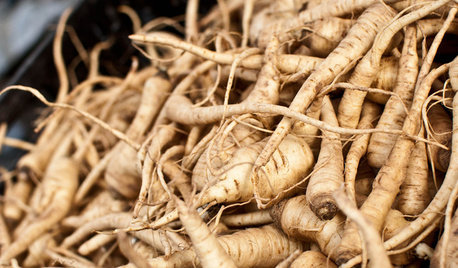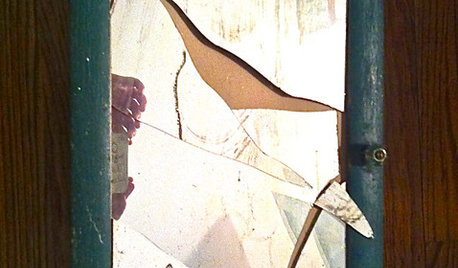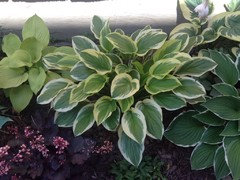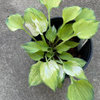I have root knot nematodes
bkay2000
8 years ago
last modified: 8 years ago
Featured Answer
Sort by:Oldest
Comments (35)
josephines167 z5 ON Canada
8 years agolast modified: 8 years agosmorz
8 years agoRelated Discussions
Prayer plant: root knot nematode?
Comments (2)Thanks, I was hoping for a reply like yours :). I hope I haven't shocked the root system too much by opening it up. Upon re-potting, do you recommend putting some soil at the bottom or just filling with soil from the top?...See MoreRoot Knot Nematodes - Anyone try treating with citrus?
Comments (14)I don't have sandy soil, but I have RKN anyway. Bummer. The Houston area is mostly clay, although we have little steaks of sand running through it. We call it gumbo or black and white soil around here. I've spent the past year amending the soil with compost already, but the nematodes are pretty bad. My standard veggie fertilizer is a compost tea/molasses blend, too. My thinking for now was to do the following: 1) treat with citrus 2) Wait a week and then plant something resistant over winter (I read broccoli does okay - my plan if I can find transplants) 3) Solarize with clear plastic in July and August 4) Maybe treat with citrus again before planting next fall. I've thought about trying the Elbon Rye, too. Maybe that'll be next year. Nothing did well this fall. I will say, though, that my banana peppers produced like crazy all summer, right in the middle of the RKN spot. Love those banana peppers!...See MoreRoot-Knot Nematodes in Z8b FL? Also own-root Austin roses fertilizing?
Comments (2)You don't have to test for nematodes. You have them. We all have them. They will eventually kill your roses if they aren't grafted, and even roses grafted onto the best rootstocks will die eventually. This is a technique for planting that will hold them off for awhile, but not forever. It really is best to plant Fortuniana grafted roses in FL, though, and even they don't live forever. Your own-root roses have about 5 years before they will die. I hate to be harsh, but that's my experience and that of many northerners who move down here and plant their favorite northern roses on their own roots. Dig a hole 3x the diameter of the pot you're transplanting from, or about 20 inches for bare roots. Dig it 3 inches deeper than you want the plant to sit. Fill the bottom three inches with straight organic peat, put your rose in and add peat until you get it to the right height, then fill the entire rest of the hole with organic peat. (Organic peat is not the same as peat moss). Nematodes hate organic matter, so this will keep them away from the roots, but not forever. It will stave them off for a few years, though, until the organic peat breaks down. I don't know any more about growing roses, just this. I'm sure someone will come along and help you who knows more. I do know some OGRs (Old Garden Roses) will grow on their own roots here....See Morehow do I control nematode
Comments (1)Hi, I just spotted your question. There is an easy organic solution to your question which is always 'put down' by those who know everything. For a planter...mix 1 cup of fresh, uncooked coffee grounds with 1 cup of granulated sugar. Work this combination into planter soil surface and water well. Easy. Try it. An old method that was commonly used in the Victory gardening days to treat any plant prone to nematodes. If planting carrots, etc. run this sugar/coffee combination down the planting row then plant and cover seeds....See MoreBabka NorCal 9b
8 years agoBabka NorCal 9b
8 years agolast modified: 8 years agosmorz
8 years agobkay2000
8 years agonewhostalady Z6 ON, Canada
8 years agosandyslopes z5 n. UT
8 years agoken_adrian Adrian MI cold Z5
8 years agosuncoastflowers
8 years agobragu_DSM 5
8 years agolast modified: 8 years agobkay2000
8 years agoirawon zone 5a Ottawa.ca
8 years agobkay2000
8 years agoBabka NorCal 9b
8 years agolast modified: 8 years agobkay2000
8 years agolast modified: 8 years agobkay2000
8 years agolast modified: 8 years agobkay2000
8 years agojosephines167 z5 ON Canada
8 years agohostatakeover swMO
8 years agozkathy z7a NC
8 years agoilovetogrow z9 Jax Florida
8 years agolast modified: 8 years agobkay2000
8 years agoMadPlanter1 zone 5
8 years agobkay2000
8 years agoMadPlanter1 zone 5
8 years agosantamiller
8 years agoBabka NorCal 9b
8 years agosantamiller
8 years agobkay2000
8 years agobkay2000
8 years agoKitchenlady (Tennessee, Zone 7a)
5 years agobkay2000
5 years agolast modified: 5 years ago
Related Stories

DECORATING GUIDESKnot Again! Macrame Is Back
It's happened. A craft that typified 1970s style (the owls, the spider plants!) is back, but better
Full Story
GARDENING AND LANDSCAPINGGeometry Roots Great Garden Design
To learn why some garden designs seem particularly pleasing to the eye, look to mathematical shapes and patterns
Full Story
GARDEN STYLESNew Garden Styles Reveal Roots in Arts and Crafts Design
Landscape design from a century ago is still influencing gardens today — see if any of its features have sprung up in yours
Full Story
RUSTIC STYLESuper Natural Design
Decorate With the Found Sculpture of Driftwood, Sticks and Roots
Full Story
COOL-SEASON CROPSCool-Season Vegetables: How to Grow Parsnips
This unfairly maligned root vegetable is the ideal choice for a winter garden, sweetening with the frost and having a long storage life
Full Story
GARDENING GUIDESGarden Myths to Debunk as You Dig This Fall and Rest Over Winter
Termites hate wood mulch, don’t amend soil for trees, avoid gravel in planters — and more nuggets of garden wisdom
Full Story
GARDENING GUIDES9 Low-Growing Hedges That Make Good Neighbors
Define garden areas or borders without blocking the view, with these evergreen shrubs that take kindly to trimming
Full Story
DECKSDecking Materials Beyond Basic Lumber
Learn about softwoods, tropical hardwoods, composites and more for decks, including pros, cons and costs
Full Story
LIFEDo You Believe in Luck Around the House?
Broken mirrors, spilled salt, an unavoidable ladder — superstitions don't seem to affect this homeowner. Knock wood
Full Story
KITCHEN DESIGNKitchen of the Week: Chestnut and an Open Fire in Connecticut
Antique chestnut boards give a kitchen with a wood-burning oven vintage flair, balancing its modern amenities
Full Story







Deb 215 SEWI5